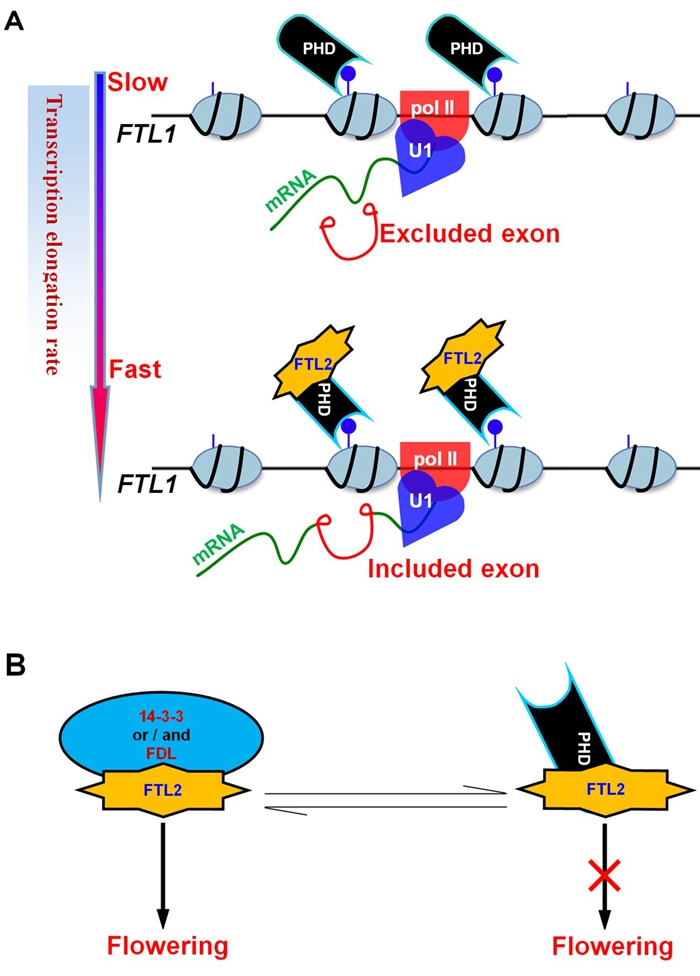The florigen interactor BdES43 represses flowering in the model temperate grass Brachypodium distachyon
Shuanghe Cao*, Xumei Luo, Li Xie, Caixia Gao, Daowen Wang, Ben F. Holt III, Hao Lin, Chengcai Chu, Xianchun Xia
影响因子:5.775
刊物名称:The Plant Journal
出版年份:29 November 2019
doi: 10.1111/tpj.14622
文章摘要:FLOWERING LOCUS T (FT) protein, physiologically florigen, has been identified as a system integrator of numerous flowering time pathways in many studies and its homologs are found throughout the plant lineage. It is important to uncover how precisely florigenic homologs contribute to flowering initiation and how these factors interact genetically. Here we dissected the function of Brachypodium FT orthologs BdFTL1 and BdFTL2 using overexpression and gene-editing experiments. Transgenic assays showed that both BdFTL1 and BdFTL2 could promote flowering, whereas BdFTL2 was essential for flowering initiation. Notably, BdFTL1 is subject to alternative splicing (AS) and its transcriptional level and AS are significantly affected by BdFTL2 . Additionally, BdFTL2 could bind with the PHD-containing protein BdES43, an H3K4me3 reader. Furthermore, BdES43 was antagonistic to BdFTL2 in flowering initiation in a transcription-dependent manner and significantly affected BdFTL1 expression. BdFTL2, BdES43 and H3K4me3 also had highly similar distribution patterns within the BdFTL1 locus, indicating their interplay in regulating target genes. Taken together, florigen BdFTL2 functions as a potential epigenetic effector of BdFTL1 by interacting with a BdES43-H3K4me3 complex. This finding provides an additional insight for the regulatory mechanism underlying the multifaceted roles of florigen.





